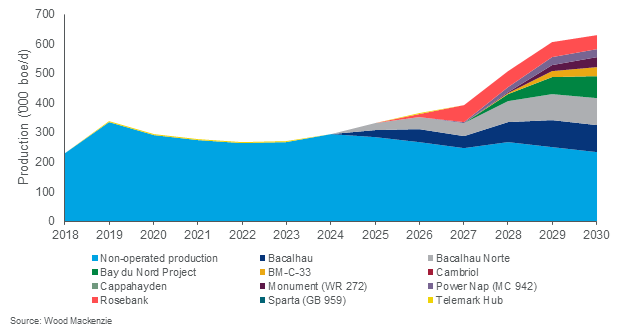Get in touch
-
Mark Thomtonmark.thomton@woodmac.com
+1 630 881 6885 -
Hla Myat Monhla.myatmon@woodmac.com
+65 8533 8860 -
Chris Bobachris.boba@woodmac.com
+44 7408 841129 -
Angélica Juárezangelica.juarez@woodmac.com
+5256 4171 1980 -
BIG PartnershipWoodMac@BigPartnership.co.uk
UK-based PR agency
With $9B BM-C-33 FID in Brazil, Equinor to increase its deepwater production outside of Norway to 400,000 boe/d by end of the decade
BM-C-33 to deliver 15% of Brazil’s 2030 domestic gas supply; multiple Equinor projects to deliver favourable economics and low emissions
1 minute read
Addressing Equinor’s announced final investment decision (FID) for Brazil’s $9 billion BM-C-33 project, Luiz Hayum, senior research analyst, Latin America and Sub-Saharan Africa Upstream Oil and Gas, said “The BM-C-33 is Equinor’s second FID in a long list of justified for development deepwater projects outside Norway. Once sanctioned, these projects will increase Equinor’s operated deepwater production outside Norway from near zero to 400,000 boe/d by the end of the decade.”
Continued Hayum, “Besides the justified for development projects Bacalhau and BM-C-33 in Brazil, we expect an FID for the multi-billion-dollar projects Rosebank in the UK and Canada’s Bay du Nord in 2023 and 2024, respectively. The economically viable US Gulf of Mexico (GoM) projects Monument and Power Nap should also contribute before the end of the decade. However, those GoM projects may see ownership changes before sanction, with a regional operator likely to be brought in.”
Equinor’s deepwater production outside Norway (historical and forecast)

According to Wood Mackenzie analysis, these are all advantaged projects with favourable economics and low emissions intensity, with IRRs ranging from 16% to 33%, and an emissions intensity average of 12 tCO2e/kboe for operated projects.
“We value BM-C-33 at US$3.3 billion (NPV10) with an IRR exceeding 16%,” said Hayum. “Equinor also expects the adoption of more efficient combined cycle gas turbines – which reduces fuel gas used for power generation – to result in emissions intensity averaging 6 tCO2e/kboe throughout the field service life.”
Hayum added that BM-C-33 will also heavily contribute to Brazil’s gas production, delivering about 14 MMcmd (495 mmcfd) of processed gas – or 15% of Brazil’s 2030 domestic gas supply – into the Rio de Janeiro grid.





